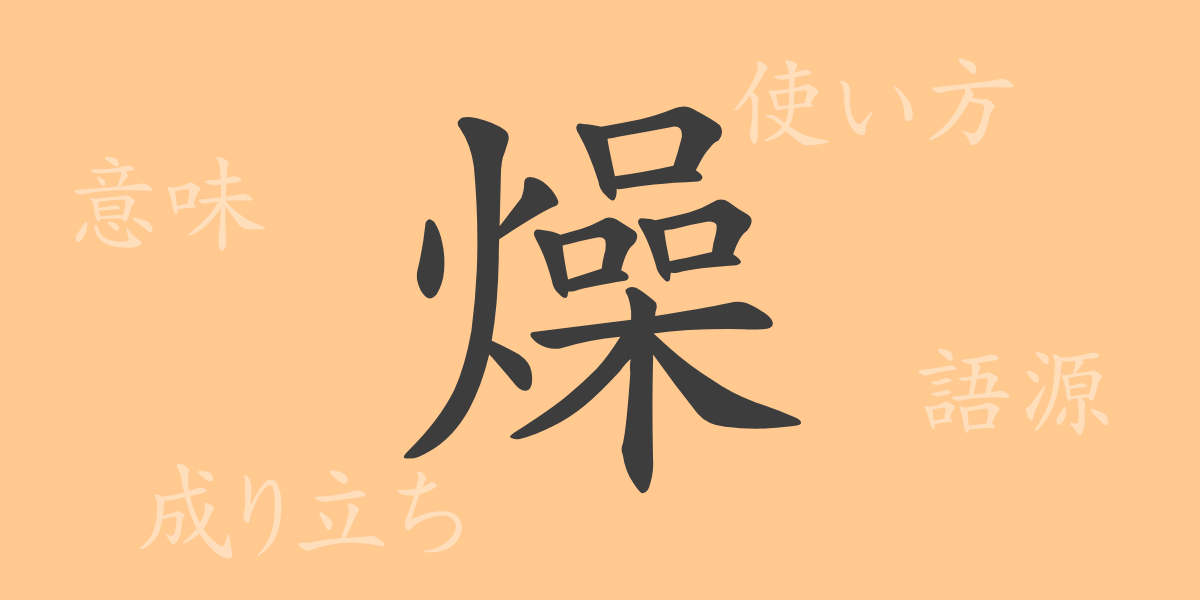The beauty of the Japanese language is significantly expressed through its intricate and meaningful Kanji characters. In this article, we spotlight the Kanji ‘燥’ (そう – sō), commonly used yet seldom fully understood in terms of its background and details. We will delve into the history, meaning, application, and the role this character plays in Japanese culture, embarking on a journey to deepen our understanding of Japanese.
Origins of 燥 (そう – Sō)
The Kanji ‘燥’ combines ‘火’ (ひへん – hi-hen), symbolizing fire, with the phonetic element ‘喿’ (そう – sō), initially representing the sound of something drying. Originally illustrating the act of drying or the state of being dry, its usage has evolved over time. This character, used since ancient times in China, has been adopted into modern Japanese with its integral meanings preserved.
Meaning and Usage of 燥 (そう – Sō)
‘燥’ primarily refers to the act or condition of drying. For instance, ‘肌が燥ぐ’ (はだがそうぐ – hada ga sōgu) means the skin is becoming dry, while ‘燥ぎやすい’ (そうぎやすい – sōgi yasui) describes a state prone to dryness. Figuratively, it also denotes restlessness or an excited state.
Readings, Stroke Count, and Radical of 燥 (そう – Sō)
Here are the details on how the Kanji ‘燥’ is perceived and utilized in Japanese:
- Readings: On’yomi (音読み) ‘ソウ’ (Sō), no specific Kun’yomi (訓読み).
- Stroke Count: A total of 17 strokes.
- Radical: The radical is ‘火’ (ひへん – hi-hen), associated with fire.
Phrases and Idioms Using 燥 (そう – Sō) and Their Meanings
The Kanji ‘燥’ contributes to a wealth of expressions in Japanese. For example:
- ‘乾燥’ (かんそう – kansō): Refers to the state of being dry, such as with materials or air.
- ‘燥ぐ’ (はしゃぐ – hashagu, そわそわする – sowasowa suru): Used to express frolicking or feeling restless.
- ‘空燥’ (くうそう – kūsō): Describes a condition where the air is extremely dry.
Conclusion on 燥 (そう – Sō)
Through this article, we’ve explored the etymology, meanings, and applications of the Kanji ‘燥’. Each Kanji in the Japanese language holds a unique history and meaning, reflecting cultural and philosophical elements through language. Understanding and appropriately using ‘燥’ can enrich one’s expressiveness in Japanese, showcasing the depth and richness of the language.

























